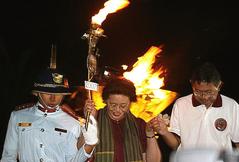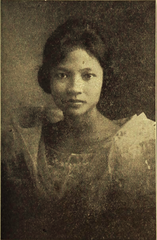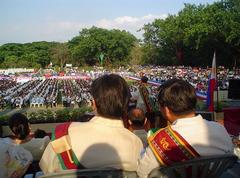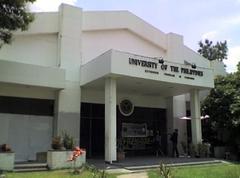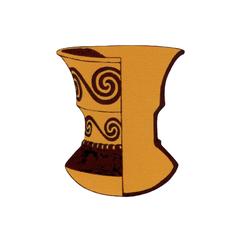
University of the Philippines Diliman Visiting Hours, Tickets, and Historical Sites Guide
Date: 14/06/2025
Introduction
The University of the Philippines Diliman (UP Diliman), located in Quezon City, is the flagship campus of the UP System and a vibrant center of history, culture, and education. Established in 1908 and relocated to Diliman in 1949, the campus has grown into a symbol of Filipino nationalism, academic freedom, and social responsibility. Visitors are drawn not only by its academic prestige but also by its iconic landmarks, lush green spaces, and deep-rooted role in Philippine social movements and the arts (UP Official History, Rappler).
UP Diliman is open to a wide range of visitors—history buffs, architecture enthusiasts, students, and tourists—offering free access to expansive grounds, cultural venues, and significant heritage sites. This guide provides detailed information on visiting hours, ticketing, accessibility, campus highlights, and travel tips to help you make the most of your visit to one of the Philippines’ most esteemed institutions (UP Diliman Official Site, Spot.ph).
Table of Contents
- Introduction
- Historical Background
- Visitor Information
- Campus Highlights and Attractions
- Guided Tours and Events
- Accessibility, Transportation, and Amenities
- Frequently Asked Questions
- Plan Your Visit
- References and Further Reading
Historical Background
Founding and Early Years
UP was established in 1908 to provide advanced education to Filipinos, initially opening its doors in Manila in 1909 (UP Official History). As its student population grew, a new site was sought, leading to the acquisition of a 493-hectare property in Diliman, Quezon City in 1939. The move to Diliman was completed in 1949, marked by the transfer of the iconic Oblation statue, a symbol of the university’s ideals (UP Diliman History).
Growth and National Significance
UP Diliman became a cradle of intellectual discourse and social activism, producing prominent alumni and playing a pivotal role in historical movements such as the 1971 Diliman Commune (Rappler). The campus architecture reflects both modernist and neoclassical influences, with landmarks like Quezon Hall, the University Theater, and the Parish of the Holy Sacrifice recognized as cultural treasures (The POST).
Visitor Information
Visiting Hours
- General Campus Access: Monday to Saturday, 7:00 AM – 7:00 PM. Some areas, such as the Academic Oval and Sunken Garden, are open as early as 6:00 AM for joggers and cyclists (Getaway.ph).
- Museums & Cultural Venues:
- Jorge B. Vargas Museum: Tuesday–Saturday, 9:00 AM–5:00 PM (Vargas Museum)
- Cine Adarna: Screenings from 2:00 PM, Monday–Saturday (Spot.ph)
- Oblation Monument: Accessible daily from 6:00 AM–9:00 PM
Ticketing and Entry
- Campus Entry: Free for all visitors.
- Museum Admission:
- Jorge B. Vargas Museum: PHP 20 (students), PHP 50 (non-UP visitors), free on Wednesdays for UP affiliates; discounts for seniors and PWDs (Manila Bulletin)
- Special Events: Some concerts, film screenings, or exhibitions may require tickets. Always check the official website or venue social media for details.
Campus Highlights and Attractions
Historic and Cultural Landmarks
- Oblation Monument: Designed by Guillermo Tolentino in 1935, this statue symbolizes selfless service and is the university’s most recognized landmark. It’s a focal point for traditions such as the annual Oblation Run (UP Diliman Website).
- Quezon Hall: The administrative center, known for its neoclassical design by Juan Nakpil.
- Parish of the Holy Sacrifice: A circular church designed by Leandro Locsin, recognized as a National Historical Landmark and Cultural Treasure.
Green Spaces
- Academic Oval: A 2.2-kilometer tree-lined loop ideal for walks, jogs, and bike rides. Surrounded by key academic buildings and public artworks.
- Sunken Garden: A sprawling, amphitheater-like green space hosting major events such as the Lantern Parade and UP Fair.
- UP Lagoon: Tranquil paths and shaded benches, perfect for relaxation and photography, featuring a notable sculpture by Napoleon Abueva.
Museums and Art Centers
- Jorge B. Vargas Museum: Renowned for its Filipiniana art and historical collections.
- Cine Adarna: Home of the UP Film Institute, showcasing indie and Filipino classic films.
- UP Carillon Tower: The only manually played carillon in Southeast Asia, with regular musical performances.
Student and Community Life
- UP Shopping Center: Offers services and UP-themed souvenirs.
- Maginhawa Street: Just outside campus, a food and creative hub popular with students and visitors.
Guided Tours and Events
- Guided Tours: Available through the UP Diliman Office of Alumni Relations, the visitor center, or the Diliman Information Office (UPD Official). Advance booking is recommended for groups.
- Cultural Festivals: Annual events include the UP Fair, Lantern Parade, and the Arts and Culture Festival, showcasing the campus’s creative energy and student activism.
- Oblation Run: A signature protest tradition held every December.
Accessibility, Transportation, and Amenities
Accessibility
- Wheelchair access is provided at major buildings and along main paths. Restrooms for PWDs are available in key areas. For assistance, contact the Office for Student Affairs or campus security.
Transportation & Parking
- By Public Transport: Jeepneys and buses serve routes along Commonwealth and Katipunan Avenues. The MRT North Avenue or Quezon Avenue stations are nearest, with onward jeepneys or taxis to UP.
- By Car: Paid parking is available but limited.
- UP Ikot Jeepney: Affordable campus shuttle, stopping at major sites including the Oblation, Quezon Hall, and the Sunken Garden.
Amenities
- On-campus dining ranges from food stalls to cafes and restaurants. Free Wi-Fi is available in select areas. Maps and brochures can be obtained at the information center.
Frequently Asked Questions
Q: Is admission to UP Diliman free?
A: Yes, entry to the campus and most outdoor sites is free.
Q: What are the campus visiting hours?
A: Generally, 7:00 AM to 7:00 PM (some areas open at 6:00 AM).
Q: Are guided tours available?
A: Yes, book in advance via the Diliman Information Office or Alumni Relations.
Q: Is the campus accessible for PWDs?
A: Yes, with ramps, accessible restrooms, and assistance available.
Q: Can I take photos on campus?
A: Yes, casual photography is allowed; professional shoots require permission.
Q: Are pets allowed?
A: Only service animals are allowed on campus.
Plan Your Visit
UP Diliman offers a rewarding blend of history, culture, and green urban space. Whether you’re exploring iconic landmarks, attending a festival, or relaxing in its gardens, the campus is a must-visit for anyone interested in Philippine heritage. For maps, updates, and guided tour bookings, visit the UP Diliman website or contact the Diliman Information Office.
Enhance your experience by downloading the Audiala app for interactive audio tours, campus maps, and exclusive content. For more tips and event updates, follow UP Diliman and Audiala on social media.
References and Further Reading
- This guide incorporates information from official sources and established publications for accuracy and detail.
- UP Official History
- UP Diliman History
- Lookback: What happened at the UP Diliman Commune of 1971? (Rappler)
- Take a Closer Look into the Most Iconic and Historic University Landmarks in the Philippines (The POST)
- Time, Space, and UP Manila
- Discover Metro Manila’s Top University Museums (Manila Bulletin)
- Campus Neighborhood Guide: UP Diliman (Spot.ph)
- UP Diliman Visitor Information
- Office for Initiatives in Culture and the Arts (OICA)
- Jorge B. Vargas Museum
- Audiala App

